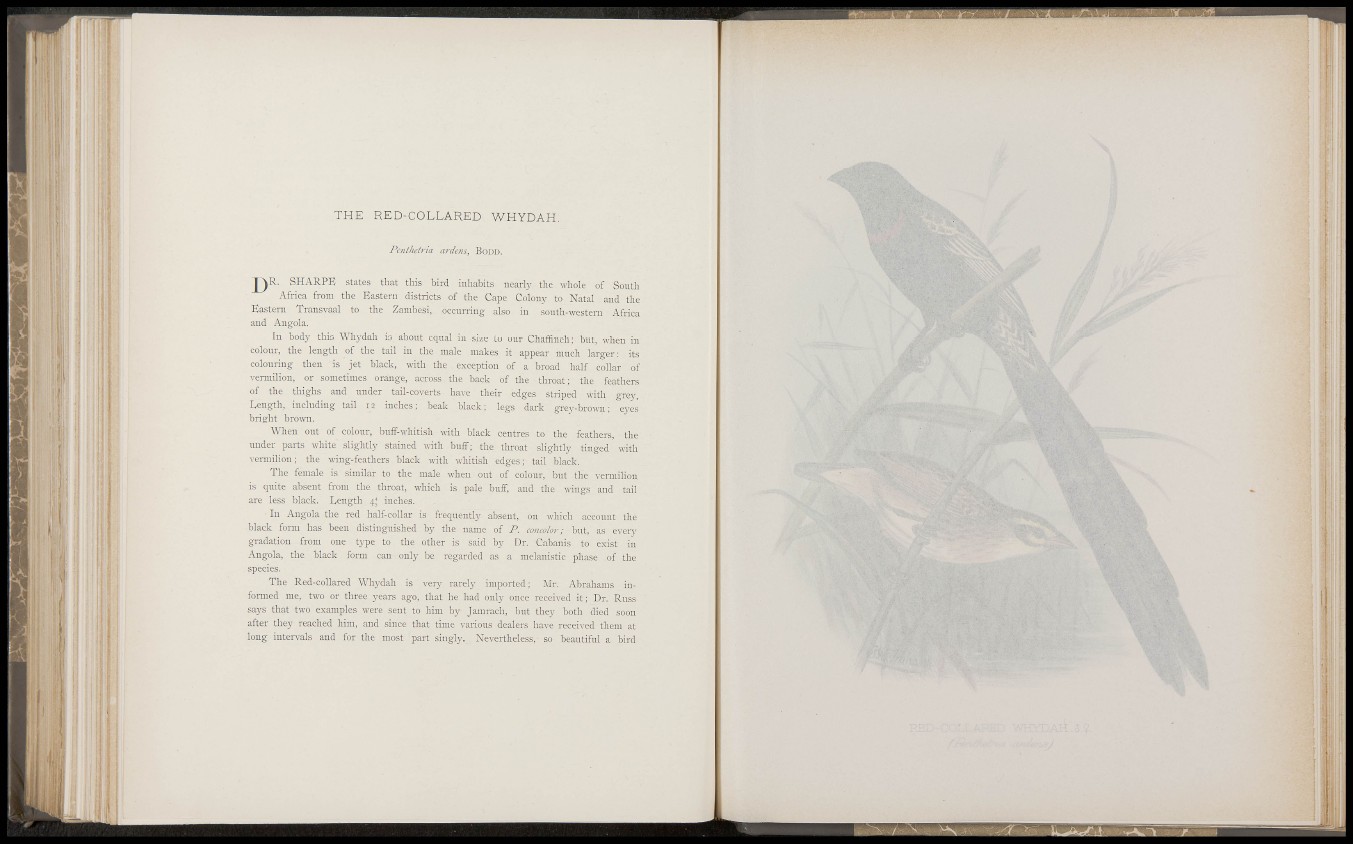
1
i THE RED-COLLARED WHYDAH.
Pontheiria ardens, BODD.
i 1
I
J Q R . SHARPS states that this bird inhabits nearly the w-hole of South
Africa from the Eastern districts of the Cape Colony to Natal and the
Eastern Transvaal to the Zambesi, occurring also in south-westeni Africa
and Angola.
hi body this Whydah is about equal in size to our Chaffinch; but, when in
colour, the length of the tail 111 tlie nifile nia,lces it appear luucli larg'er • its
colouring then is jet black, with the exception of a broad half collar of
vermilion, or sometimes orange, across the back of the throat; the feathers
of the thighs and under tail-coverts have their edges striped with grey.
Length, including tail 12 inches; beak black; legs dark grey-brown; \ves
bright brown.
When out of colour, buff-whitish mth black centres to the feathers, the
under parts white slightly stained with buff; the throat slightly tinged with
vermilion; the wing-feathers black with whitish edges; tail black.
The female is similar to the male when out of colour, but the vermilion
is quite absent from the throat, which is pale buff, and the wings and tail
are less black. Length inches.
In Angola the red half-collar is frequently absent, on which account the
black form has been distinguished by the name of P. concolor; but, as everj'
gradation from one type to the other is said by Dr. Cabanis to exist in
Angola, the black form can only be regarded as a melanistic phase of the
species.
The Red-collared Whydah is very rarely imported; Mr. Aljrahams informed
me, two or three years ago, that he had only once received it; Dr. Russ
says that two examples were sent to him by Jamrach, but they both died soon
after they reached him, and since that time various dealers have received them at
long intervals and for the most part singly. Nevertheless, so beautiful a bird
•I I